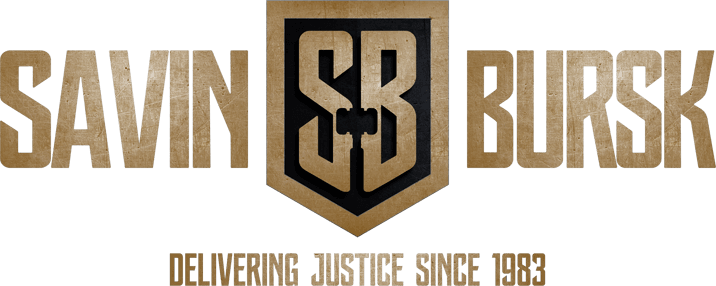THE FIGHT FOR RELEVANCE IS REAL
Change Happens Gradually,
and then Suddenly
Today’s brands and marketers find themselves in an incredibly challenging and complex environment. Traditional marketing models have broken down, campaign fragmentation is rampant, and the face of marketing is shifting from brands pushing—to consumers curating. With rapid innovation radically changing how companies win and retain customers, staying relevant and competitive will depend on adopting a digital marketing strategy equal to the challenges ahead.

Watch Video
Change Happens Gradually, and
then Suddenly
THE FIGHT FOR RELEVANCE IS REAL

Watch Video
Today’s brands and marketers find themselves in an incredibly challenging and complex environment. Traditional marketing models have broken down, campaign fragmentation is rampant, and the face of marketing is shifting from brands pushing—to consumers curating. With rapid innovation radically changing how companies win and retain customers, staying relevant & competitive will depend on adopting a digital marketing strategy equal to the challenges ahead.
Big Agency Capabilities
for Meticulous Budgets
AUTOMATED, MULTI-CHANNEL MARKETING STRATEGIES, CUSTOMER JOURNEY MAPPING, AND UX/UI DESIGN
The Challenge
Despite their differences, B2B, B2C, and D2C companies share the same problem; digital marketing today is so complex and resource-intensive, they are forced to make a difficult choice: to either build an in-house creative marketing team (which is expensive and unrealistic for most companies) or hire and manage multiple, single-tactic marketing vendors and live with the lessened power and inherent inefficiencies. Until now…
Our Solution
Dymic, a global strategic marketing and advertising agency, is transforming the digital journey in a way most agencies cannot—bridging the gaps from strategy to execution and providing big agency capabilities to the small and mid-size business segment. Now business leaders with smaller budgets can come to a single source to design, build and run integrated, technology-driven marketing campaigns that prepare them for the future, improve their customer’s experience and breathe life back into their businesses.
Big Agency Capabilities for Meticulous Budgets
AUTOMATED, MULTI-CHANNEL MARKETING STRATEGIES, CUSTOMER JOURNEY MAPPING, & UX/UI DESIGN
The Challenge
Despite their differences, B2B, B2C, and D2C companies share the same problem; digital marketing today is so complex and resource-intensive, they are forced to make a difficult choice: to either build an in-house creative marketing team (which is expensive and unrealistic for most companies) or hire and manage multiple, single-tactic marketing vendors and live with the lessened power and inherent inefficiencies. Until now…
Our Solution
Dymic, a global strategic marketing and advertising agency, is transforming the digital journey in a way most agencies cannot—bridging the gaps from strategy to execution and providing big agency capabilities to the small and mid-size business segment. Now business leaders with smaller budgets can come to a single source to design, build and run integrated, technology-driven marketing campaigns that prepare them for the future, improve their customer’s experience and breathe life back into their businesses.
Bringing Order to
Chaos & Complexity
The Challenge
Consumer attention is fragmented across a wide range of media channels and devices. Between digital, inbound, and traditional marketing methods, there are an incredible number of moving parts. The challenge lies in not just understanding how each tactic or technology works, but also how they work in harmony with each other. When companies hire siloed agencies or freelancers, they have to balance multiple design consultations, project managers, deadlines, meetings, and approval processes. With so many voices, it’s nearly impossible to create one cohesive message.
Our Solution
The Dymic model is all-inclusive—a multi-disciplinary marketing solution designed to bring coherence to the complexity and give brands more control over their message. With a single project leader, coordinating a multi-channel marketing strategy is simplified, and delivering a consistent, customer-focused brand experience across every touchpoint is made possible.
More than 70% of consumers use three or more
channels when researching a purchase.
Bringing Order
to Chaos & Complexity
The Challenge
Consumer attention is fragmented across a wide range of media channels and devices. Between digital, inbound, and traditional marketing methods, there are an incredible number of moving parts. The challenge lies in not just understanding how each tactic or technology works, but also how they work in harmony with each other. When companies hire siloed agencies or freelancers, they have to balance multiple design consultations, project managers, deadlines, meetings, and approval processes. With so many voices, it’s nearly impossible to create one cohesive message.
Our Solution
The Dymic model is all-inclusive—a multi-disciplinary marketing solution designed to bring coherence to the complexity and give brands more control over their message. With a single project leader, coordinating a multi-channel marketing strategy is simplified, and delivering a consistent, customer-focused brand experience across every touchpoint is made possible.
More than 70% of consumers use three
or more channels when researching
a purchase.
Step 1.
Strategy: Establish objectives, set goals and KPIs, identify tactics.
Tactical marketing (SEO, PPC, etc.) without a strategy is like building a house without a blueprint. Dymic provides businesses with the missing pieces to build a growth blueprint tailored to their industry and ideal customer's journey.
- Web Design / UX Analysis
- Customer Journey Mapping
- Buyer Persona Development
- Digital Channel Strategy
- Visibility / Traffic Analysis
- Conversion / ROMI Analysis

Step 2.
Content: Align creativity with strategy and buyer personas.
Achieving creative and strategic alignment is essential to producing and sharing useful content that captures the attention of your audience, answers their questions, and supports them in every stage of their purchase journey.
- Graphic Design
- Copywriting
- Brand Story & Identity
- Videography
- Photography
- Public Relations

Step 3.
UX & UI: Design with a focus on the human experience.
By combining market research, product development, and strategy with design principles, our designers can create seamless user experiences, anticipate customer needs, and unite brand promises with consumer expectations.
- Website Design
- Landing Page Design
- Conversion Optimization
- UI & UX Design
- Mobile App Design
- Pitch Deck Design

Step 4.
Marketing: Build campaigns that make more than they cost.
We combine UX design, powerful insights, and innovative technologies to engineer efficient, high-performing customer journeys that align brands with the way today’s buyers think, research, and purchase.
- SEO (Local & National)
- PPC / Paid Advertising
- Social Media Marketing
- LinkedIn Marketing
- Reputation Management
- Podcast Development

Step 1.
Strategy: Establish objectives, set goals and KPIs, identify tactics.
Tactical marketing (SEO, PPC, etc.) without a strategy is like building a house without a blueprint. Dymic provides businesses with the missing pieces to build a growth blueprint tailored to their industry and ideal customer's journey.
- Digital Channel Strategy
- Visibility / Traffic Analysis
- Conversion / ROMI Analysis
- Web Design / UX Analysis
- Customer Journey Mapping
- Buyer Persona Development
Step 2.
Content: Align creativity with strategy and buyer personas.
Achieving creative and strategic alignment is essential to producing and sharing useful content that captures the attention of your audience, answers their questions, and supports them in every stage of their purchase journey.
- Graphic Design
- Copywriting
- Brand Story & Identity
- Videography
- Photography
- Public Relations
Step 3.
UX & UI: Design with a focus on the human experience.
By combining market research, product development, and strategy with design principles, our designers can create seamless user experiences, anticipate customer needs, and unite brand promises with consumer expectations.
- Website Design
- Landing Page Design
- Conversion Optimization
- UI & UX Design
- Mobile App Design
- Pitch Deck Design
Step 4.
Marketing: Build campaigns that make more than they cost.
We combine UX design, powerful insights, and innovative technologies to engineer efficient, high-performing customer journeys that align brands with the way today’s buyers think, research, and purchase.
- SEO (Local & National)
- PPC / Paid Advertising
- Social Media Marketing
- LinkedIn Marketing
- Reputation Management
- Podcast Development
Harnessing the Power
of Integrated Marketing
The Challenge
Consumers want to determine how and when companies engage them, and they hold the power to control that engagement—any time, and in any place—with their mobile devices. Because they demand consistent, personalized attention across multiple channels, integrated marketing is fast becoming the model of the future.
Our Solution
Dymic’s integrated marketing model aligns brands with modern consumers by creating hyper-relevant, incisive messaging on multiple media channels to provide potential buyers with the right answers—at the right time—on the platform of their choice. When marketing efforts are united and the customer journey is streamlined in this way, campaigns are more efficient, productive, and deliver a much higher return on investment.
Integrated Campaigns
Are 300% More Effective
4+ Media Channels
Outperform Single or Dual
Harnessing the Power of Integrated Marketing
The Challenge
Consumers want to determine how and when companies engage them, and they hold the power to control that engagement—any time, and in any place—with their mobile devices. Because they demand consistent, personalized attention across multiple channels, integrated marketing is fast becoming the model of the future.
Our Solution
Dymic’s integrated marketing model aligns brands with modern consumers by creating hyper-relevant, incisive messaging on multiple media channels to provide potential buyers with the right answers—at the right time—on the platform of their choice. When marketing efforts are united and the customer journey is streamlined in this way, campaigns are more efficient, productive, and deliver a much higher return on investment.
Integrated Campaigns Are 300%
More Effective
4+ Media Channels Outperform
Single or Dual
ROI: Changing the
Focus and Priorities
The Challenge
Until recently, marketing was relatively unaffected by technology, automation, and measurability; it was primarily driven by creativity and ideas. But the emergence of digital as the key marketing channel has changed everything. The level of expertise required to execute a multi-channel marketing campaign, as well as the increasing availability of customer data, has sharpened the focus on campaign ROI. To drive growth in this new world, marketers must incorporate data-driven insights and choose KPIs that truly align with the client’s business objectives.
Our Solution
The Dymic model is built around the idea that engagement metrics (e.g. clicks, views, keyword rankings) are a means to an end. Although these measurements are indicators of progress, the value or success of a marketing campaign is determined by its ability to create a return on investment. With this in mind, we combine modern analytics with traditional research methods and marketing fundamentals to tap into the beliefs and behaviors of the target audience. Then we apply the following three mindset shifts to measure the impact our activities have on revenue generation, return on marketing spend, and business growth.
Customers
vs. Clicks
Conversions
vs. Traffic
Outcomes
vs. Metrics
ROI: Changing the Focus and Priorities
The Challenge
Until recently, marketing was relatively unaffected by technology, automation, and measurability; it was primarily driven by creativity and ideas. But the emergence of digital as the key marketing channel has changed everything. The level of expertise required to execute a multi-channel marketing campaign, as well as the increasing availability of customer data, has sharpened the focus on campaign ROI. To drive growth in this new world, marketers must incorporate data-driven insights and choose KPIs that truly align with the client’s business objectives.
Our Solution
The Dymic model is built around the idea that engagement metrics (e.g. clicks, views, keyword rankings) are a means to an end. Although these measurements are indicators of progress, the value or success of a marketing campaign is determined by its ability to create a return on investment. With this in mind, we combine modern analytics with traditional research methods and marketing fundamentals to tap into the beliefs and behaviors of the target audience. Then we apply the following three mindset shifts to measure the impact our activities have on revenue generation, return on marketing spend, and business growth.
Customers vs. Clicks
Conversions vs. Traffic
Outcomes vs. Metrics
Brands We've Worked With
We’ve been a reliable partner for many major and emerging brands over the past decade. Our experience has helped build and grow businesses across a variety of industry sectors; from healthcare to automotive, pharmaceutical to finance, legal to aerospace, home services to non-profits, and many more.
Brands We've Worked With
We’ve been a reliable partner for many major and emerging brands over the past decade. Our experience has helped build and grow businesses across a variety of industry sectors; from healthcare to automotive, pharmaceutical to finance, legal to aerospace, home services to non-profits, and many more.














